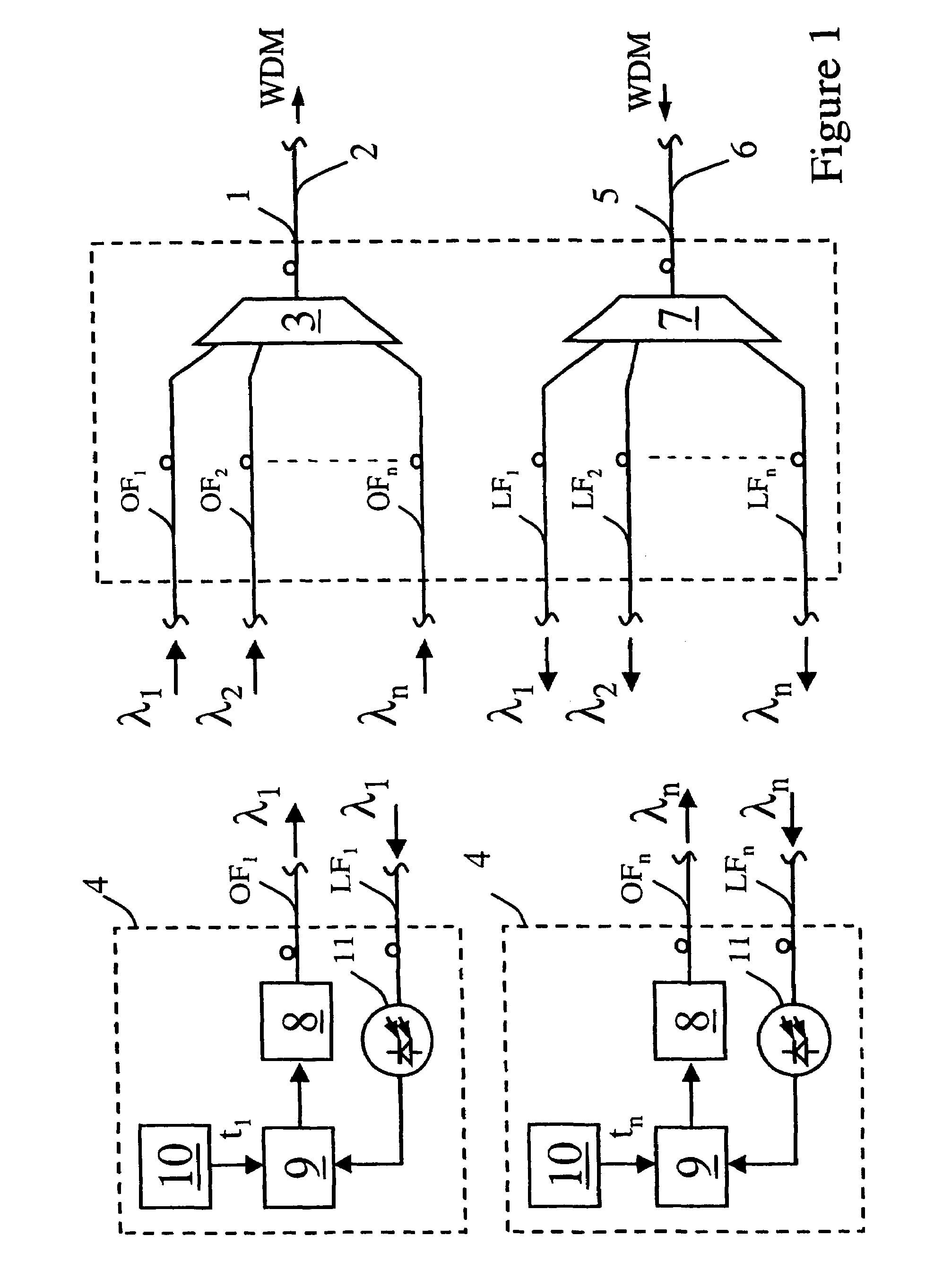Optical transmitter system
a technology of optical transmitter and optical receiver, which is applied in the direction of multiplex communication, transmission monitoring, instruments, etc., to achieve the effect of limiting the power level of any escape radiation and preventing accidental escape radiation
- Summary
- Abstract
- Description
- Claims
- Application Information
AI Technical Summary
Benefits of technology
Problems solved by technology
Method used
Image
Examples
Embodiment Construction
[0020]Referring to the FIG. 1, the optical WDM transmitter / receiver system includes an output port 1 for connection to an output optical fibre 2 capable of transmitting a WDM optical signal comprising a plurality n of different wavelength channels (λ1 to λn), optical radiation components. Typically the system would be configured for operation in C-band (i.e. a free-space wavelength of 1530 to 1565 nm) and have 32 wavelength channels with wavelength spacing between channels of 0.8 nm. It will be appreciated that the present invention applies equally to other wavelength ranges of operation having differing numbers of channels / channel spacings.
[0021]The WDM signal is generated by a wavelength selective multiplexer 3 which passively combines the individual wavelength channels (λ1 to λn) from a respective optical fibres OF1 to OFn. As is known the wavelength selective multiplexer 3 could typically comprise an arrayed waveguide grating or cascaded dichroic filters. Each fibre OF1 to OFn i...
PUM
 Login to View More
Login to View More Abstract
Description
Claims
Application Information
 Login to View More
Login to View More - R&D
- Intellectual Property
- Life Sciences
- Materials
- Tech Scout
- Unparalleled Data Quality
- Higher Quality Content
- 60% Fewer Hallucinations
Browse by: Latest US Patents, China's latest patents, Technical Efficacy Thesaurus, Application Domain, Technology Topic, Popular Technical Reports.
© 2025 PatSnap. All rights reserved.Legal|Privacy policy|Modern Slavery Act Transparency Statement|Sitemap|About US| Contact US: help@patsnap.com


